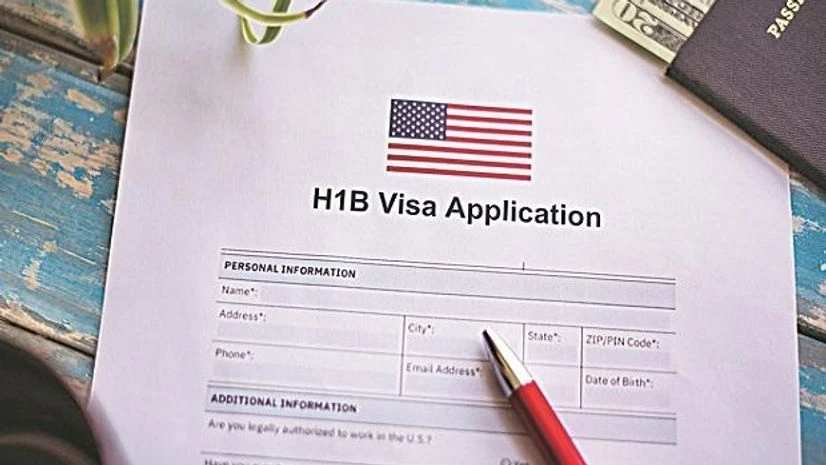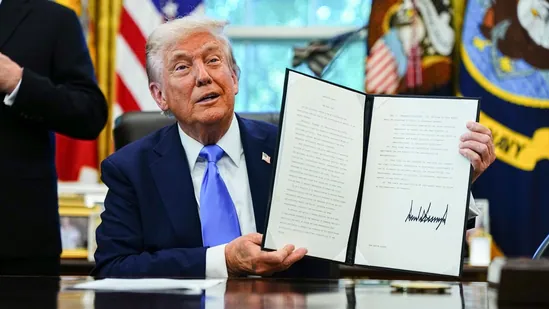The United States government’s recent decision to raise the annual H-1B visa fee to $100,000 has ignited widespread debate across business, technology, and immigration circles. The move, unveiled this week, is being described as one of the most dramatic shifts in U.S. immigration policy in decades. While the government argues that the policy will help protect American jobs and generate additional revenue, critics warn that it could have devastating consequences for innovation, global talent mobility, and the country’s standing as the top destination for skilled professionals.
What Is the H-1B Visa and Why It Matters?
The H-1B visa program allows U.S. companies to hire foreign workers in specialty occupations such as engineering, computer science, medicine, and finance. For decades, the program has been a cornerstone of America’s global competitiveness, especially in Silicon Valley, where multinational companies rely heavily on skilled engineers and IT professionals from countries like India and China.
Every year, around 85,000 new H-1B visas are issued, though demand consistently exceeds supply. Tech giants such as Google, Microsoft, Amazon, and smaller startups alike have long depended on the program to fill critical skill gaps.
The New Policy: A $100,000 Annual Fee
Until now, the H-1B visa carried a fee of a few thousand dollars, depending on the employer’s size and the type of application. With the new regulation, employers will be required to pay $100,000 per worker, every year, in addition to regular processing and legal costs.
The U.S. administration defends this move as a way to:
- Reduce overreliance on foreign labor.
- Generate billions of dollars in federal revenue.
- Encourage companies to invest more in training American workers.
However, critics argue that the policy is not only excessive but also counterproductive.
Global Repercussions
- 1.India and Other Talent Hubs Hit Hard
India, which accounts for the majority of H-1B visa holders, is expected to face the sharpest blow. Indian IT companies such as Infosys, Wipro, and TCS may find it financially unviable to send employees to the U.S. under the new scheme. This could trigger massive disruptions in outsourcing contracts and lead to a slowdown in cross-border business relations.
- 2.Silicon Valley’s Innovation at Risk
The American technology sector has long warned that without access to global talent, innovation pipelines would shrink. Startups, in particular, may struggle to survive under the financial burden, leaving only wealthy corporations able to afford the new fees. Critics fear this will lead to a “brain drain in reverse”, where talented professionals look to Canada, Europe, or Australia instead of the U.S.
- 3. Impact on U.S.–Global Relations
The move has already sparked diplomatic conversations. Indian officials have voiced concern, calling the new fee “discriminatory and prohibitive.” Analysts believe this could strain U.S. partnerships with countries that traditionally supply skilled workers.
Domestic Debate: Protectionism vs. Progress

The fee hike has also divided opinion within the United States. Supporters argue that it will finally put American workers first, discouraging companies from “over-importing cheap labor.” They point to stagnant wages in certain STEM fields as evidence that companies abuse the system.
On the other hand, business leaders and academic institutions argue that the policy is short-sighted. U.S. universities, which attract tens of thousands of international students every year, may see declining enrollment if students believe there is no clear career pathway after graduation. This could cost the U.S. billions in tuition revenue and weaken its soft power.
Potential Legal Challenges
Immigration attorneys and business coalitions are already preparing lawsuits, claiming that the government has overstepped its authority. They argue that the fee is not just a revenue measure but effectively a barrier designed to block skilled immigration. Legal experts predict that the issue could reach the U.S. Supreme Court, especially if companies prove that the fee violates international trade agreements.
What Happens Next?
The new H-1B fee structure is set to take effect in April 2026, in time for the next application cycle. In the meantime, lobbying groups, tech CEOs, and foreign governments are expected to mount pressure on Washington to reconsider or at least revise the policy.
Some possible alternatives being floated include:
- A tiered system, where small businesses pay less.
- Discounts for sectors facing acute labor shortages.
- Additional pathways for students transitioning from U.S. universities to jobs.
A Turning Point for Skilled Migration
The decision to raise the H-1B visa fee to $100,000 marks a turning point in U.S. immigration policy. While the government frames it as an effort to protect American workers, the broader impact may be to weaken the very industries that fuel the nation’s economic strength.
As businesses, universities, and foreign governments weigh their next steps, one thing is clear: this decision has the potential to reshape not only the future of the American workforce but also the global flow of talent. Whether it strengthens the U.S. economy or drives innovation elsewhere will depend on how the coming months of debate and negotiation unfold.









